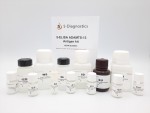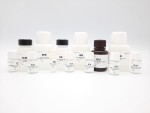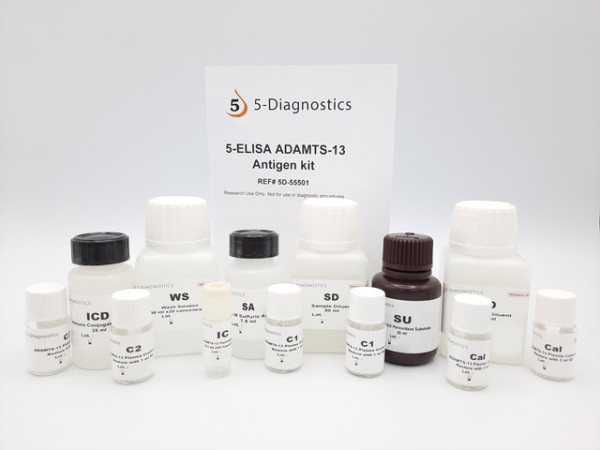
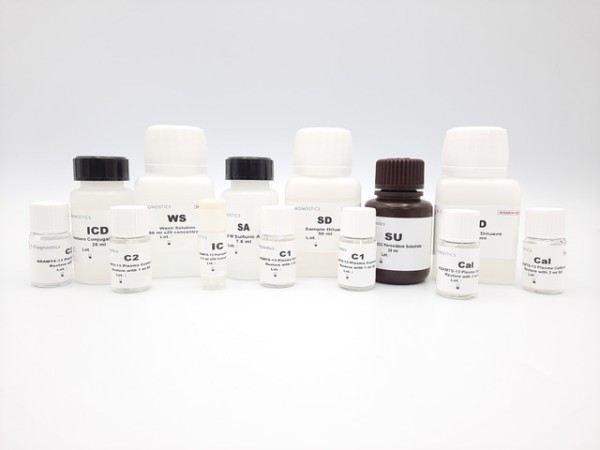
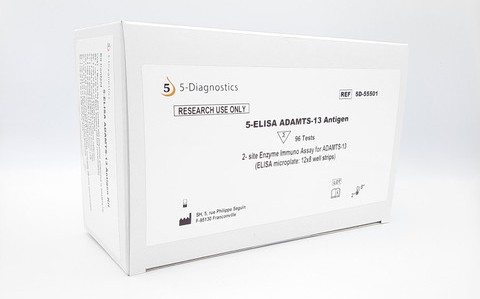


5-ELISA ADAMTS-13 Antigen
We're always working hard to give our customers as much information on products and the best price possible. If you need any assistance or would like a quote please contact us and we will be happy to help
5-ELISA ADAMTS-13 Antigen (5D-55501) is an ELISA (RUO) kit for measuring ADAMTS-13 antigen in human plasma or other biological fluids. This sandwich ELISA is designed with polyclonal antibodies coated onto the plate for capturing ADAMTS-13 in the tested sample. Manufactured by 5-Diagnostics.
5-ELISA ADAMTS-13 Antigen (5D-55501) has an intended use of the measurement of ADAMTS-13 antigen in human plasma by one-step method or two-step method.
- Kit comes complete with calibrator and high and low controls
- Faster assay time of 1h 5 min (compared to other kits 3h 15 min). One step method brings this down to just 65 minutes.
- The use of polyclonal antibodies increases sensitivity to mutations on the CUB domain
- 2 x 8 wells ELISA test strips and reconstituted reagents can be stored up to 6 months once opened for maximum efficiency
- Higher pipetting volumes (200 vs 50µL) improves kit performance
This sandwich ELISA is designed with polyclonal antibodies coated onto the plate for capturing ADAMTS-13 in the tested sample. Following a washing step, captured ADAMTS-13 is tagged with a peroxidase-labeled polyclonal antibody, which binds onto the free epitopes in a dose-dependent manner. After washing away the excess of immunoconjugate, the substrate, 3,3’,5,5’ Tetramethylbenzidine (TMB) with hydrogen peroxide (H2O2) is introduced and a yellow color develops, which turns blue when the reaction is stopped with sulfuric acid. This color is measured at 450 nm, and the measured value is directly proportional to the amount of ADAMTS-13 present in the tested sample. Results are expressed in International Units (IU) per mL, by reference to the International Standard for ADAMTS-13 in plasma.
ADAMTS-13 is a metalloproteinase present in plasma at a concentration of about 500-800 ng/mL. It cleaves high molecular weight von Willebrand factor polymers to a lower molecular weight, following its release into blood circulation from endothelial cells (released from Weibel-Palade bodies).
